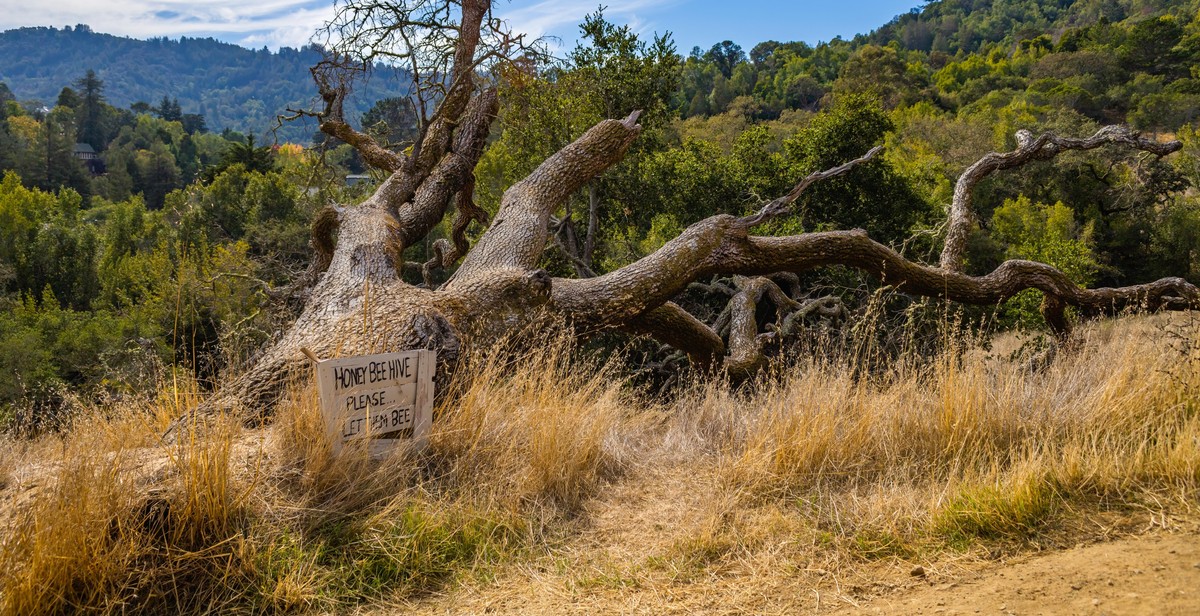How to Study Wildlife Tracks and Signs: Identifying Animals through Their Footprints and Markings
Studying wildlife tracks and signs is an essential way to understand the behavior, habitat, and movement patterns of animals. Wildlife tracks and signs refer to the physical evidence left behind by animals, including footprints, scat, fur, feathers, and markings on trees or rocks.
Why Study Wildlife Tracks and Signs?
Studying wildlife tracks and signs can provide valuable insights into the lives of animals in their natural habitat. It can help identify the species of animals present in an area, their numbers, and how they interact with other animals and their environment. It can also help in conservation efforts by identifying endangered species and their habitat requirements, which can inform land-use planning and management decisions.
What Can You Learn from Wildlife Tracks and Signs?
Wildlife tracks and signs can reveal a wealth of information about animal behavior, such as their movement patterns, feeding habits, and social interactions. They can also provide clues about the health of individual animals and populations. For example, the size and shape of footprints can indicate the age, sex, and size of an animal. The presence of scat can reveal the diet of an animal and the health of its digestive system.
Overall, studying wildlife tracks and signs can be a fascinating and rewarding way to connect with nature and gain a deeper understanding of the animals that share our world.
![]()
Tools for Studying Wildlife Tracks and Signs
Studying wildlife tracks and signs can be an exciting and rewarding experience, but it requires the right tools to make the most of your observations. Here are some tools that can help you identify animals through their footprints and markings:
Field Guides
Field guides are essential tools for any wildlife tracker. They provide detailed information on the tracks and signs of different animals, including their size, shape, and distinctive features. Field guides also include illustrations and photographs that can help you identify tracks and signs in the field.
Some popular field guides for wildlife tracking include “Mammal Tracks and Sign” by Mark Elbroch, “Tracking and the Art of Seeing” by Paul Rezendes, and “Peterson Field Guide to Animal Tracks” by Mark Elbroch and Kurt Rinehart.
Tracking Cards
Tracking cards are pocket-sized reference cards that can help you identify tracks and signs in the field. They typically include illustrations and descriptions of common tracks and signs, along with information on the animals that make them.
Some popular tracking cards include “Pocket Guide to Tracks” by Mark Elbroch and “Wildlife Tracks and Sign” by David Moskowitz.
Camera Traps
Camera traps are motion-activated cameras that can capture images and videos of wildlife in their natural habitat. They can be a valuable tool for studying wildlife tracks and signs, as they can provide visual evidence of the animals that are making them.
Camera traps can also be used to monitor wildlife populations and behavior, and to identify individual animals based on their unique markings and characteristics.
Some popular camera traps for wildlife tracking include the Bushnell Trophy Cam and the Browning Strike Force HD Pro.

Identifying Animal Tracks
One of the most important aspects of studying wildlife tracks and signs is being able to identify the tracks left by different animals. This requires an understanding of the basic anatomy of animal tracks and knowledge of the common animal tracks in your area.
Basic Anatomy of Animal Tracks
Animal tracks are made up of several parts that can help you identify the animal that made them:
- Toes: The number of toes and their shape can vary between different animals and can be a helpful characteristic for identification.
- Pads: The pads on an animal’s feet can also vary in shape and size, and can leave distinct markings in the track.
- Claws: Some animals have retractable claws that may not always leave a mark in the track, while others have non-retractable claws that are visible in the track.
- Stride: The distance between each track can give you an idea of the size of the animal and how it moves.
Common Animal Tracks and How to Identify Them
Here are some common animal tracks and tips on how to identify them:
| Animal | Track Description | Tips for Identification |
|---|---|---|
| Deer | Hoof-shaped track with two toes and a heart-shaped imprint between them | Look for a distinctive “V” shape at the front of the track |
| Raccoon | Hand-shaped track with five fingers and a distinct “palm” pad | Look for a diagonal pattern in the track caused by the raccoon’s waddling gait |
| Coyote | Dog-like track with four toes and claw marks visible | Look for a straight line between each track caused by the coyote’s direct gait |
| Bobcat | Small, round track with four toes and no visible claw marks | Look for a distinctive “M” shape at the front of the track caused by the bobcat’s retractable claws |
Remember, identifying animal tracks takes practice and experience. If you’re not sure what animal made a particular track, take a photo and consult a field guide or wildlife expert for help.

Interpreting Animal Signs
Interpreting animal signs is a crucial aspect of studying wildlife tracks and signs. Understanding the different types of animal signs can help you identify the species that inhabit an area and their behavior patterns. Here are some common animal signs that you may encounter:
Scat Identification
Animal droppings or scat can provide valuable information about the animal that left it. The size, shape, and content of the scat can help you identify the species and their diet. For example, deer scat is usually pellet-like and segmented, while carnivores like coyotes or foxes produce long and twisted scats that often contain fur or bone fragments.
Bite Marks and Chewed Items
Bite marks and chewed items can also provide valuable information about the animal that made them. For instance, beaver teeth marks on a tree trunk or branch indicate the presence of beavers in the area. Similarly, gnawed bones or antlers may indicate the presence of carnivores like wolves or bears.
Scratches and Rubs
Scratches and rubs are another type of animal sign that can help you identify the species and their behavior patterns. For example, deer often rub their antlers on trees to remove the velvet during the mating season. You may also find scratches on a tree trunk made by a bear marking its territory.
By interpreting these animal signs, you can gain a better understanding of the wildlife that inhabits an area. Remember to take note of the location, size, and shape of the animal sign, as well as the surrounding environment. This information can help you identify the species and their behavior patterns, and ultimately enhance your wildlife tracking skills.
![]()
Tracking Techniques
Tracking techniques are essential tools for identifying animals through their footprints and markings. These techniques include:
Track Traps
Track traps are physical barriers that are placed in the path of an animal to capture its footprints or other markings. These traps can be made from a variety of materials, including sand, mud, or even snow. Track traps are especially useful for capturing the footprints of elusive animals, such as mountain lions or coyotes.
When setting up a track trap, it is important to choose a location that is likely to be frequented by the animal you are trying to track. This may include areas near water sources or along animal trails. Once the trap is set, it is important to monitor it regularly to check for any new footprints or markings.
Track Plates
Track plates are another type of tracking technique that involves placing a piece of paper or other material on the ground in an area where animals are likely to pass through. When an animal steps on the plate, it leaves behind a clear imprint of its foot or paw. Track plates are especially useful for identifying the size and shape of an animal’s footprints.
When using track plates, it is important to choose a material that is durable and can withstand the elements. It is also important to place the plates in an area where they will not be disturbed by human traffic or other animals.
Sand Tracking
Sand tracking involves using a soft, sandy surface to capture an animal’s footprints or other markings. This technique is especially useful for identifying the direction an animal is traveling and can help to determine its speed and gait.
When using sand tracking, it is important to choose a location where the sand is deep enough to capture clear footprints. It is also important to avoid areas where the sand may be disturbed by human traffic or other animals.
| Technique | Advantages | Disadvantages |
|---|---|---|
| Track Traps | Effective for capturing footprints of elusive animals | May be time-consuming to set up and monitor |
| Track Plates | Useful for identifying size and shape of footprints | May be easily disturbed by human traffic or other animals |
| Sand Tracking | Helpful for identifying direction, speed, and gait of an animal | Requires a deep, undisturbed layer of sand |

Conclusion
Studying wildlife tracks and signs is a fascinating and rewarding way to connect with nature and learn about the animals that inhabit our world. By understanding the clues they leave behind, you can identify the species, track their movements, and gain insight into their behavior and habits.
Whether you are a beginner or an experienced tracker, there are many resources available to help you improve your skills and knowledge. From field guides and online resources to tracking classes and workshops, there are many ways to deepen your understanding of animal tracks and signs.
Remember that tracking is a skill that requires patience, practice, and persistence. It takes time to learn the subtle differences between tracks and interpret the signs left by animals. But with dedication and a willingness to learn, you can become a skilled tracker and gain a deeper appreciation for the natural world.
Tips for Successful Wildlife Tracking
- Start by learning the basics of track identification, including the shape, size, and pattern of the tracks.
- Look for other signs of animal activity, such as scat, fur, feathers, and chewed vegetation.
- Take note of the habitat where you find the tracks, including the type of vegetation, terrain, and water sources.
- Use a tracking journal to record your observations and track your progress over time.
- Practice tracking in different environments and weather conditions to improve your skills.
- Respect the animals you are tracking by minimizing your impact on their habitat and observing from a distance.
By following these tips and continuing to learn and practice, you can become a skilled tracker and gain a deeper understanding and appreciation for the natural world around us.
